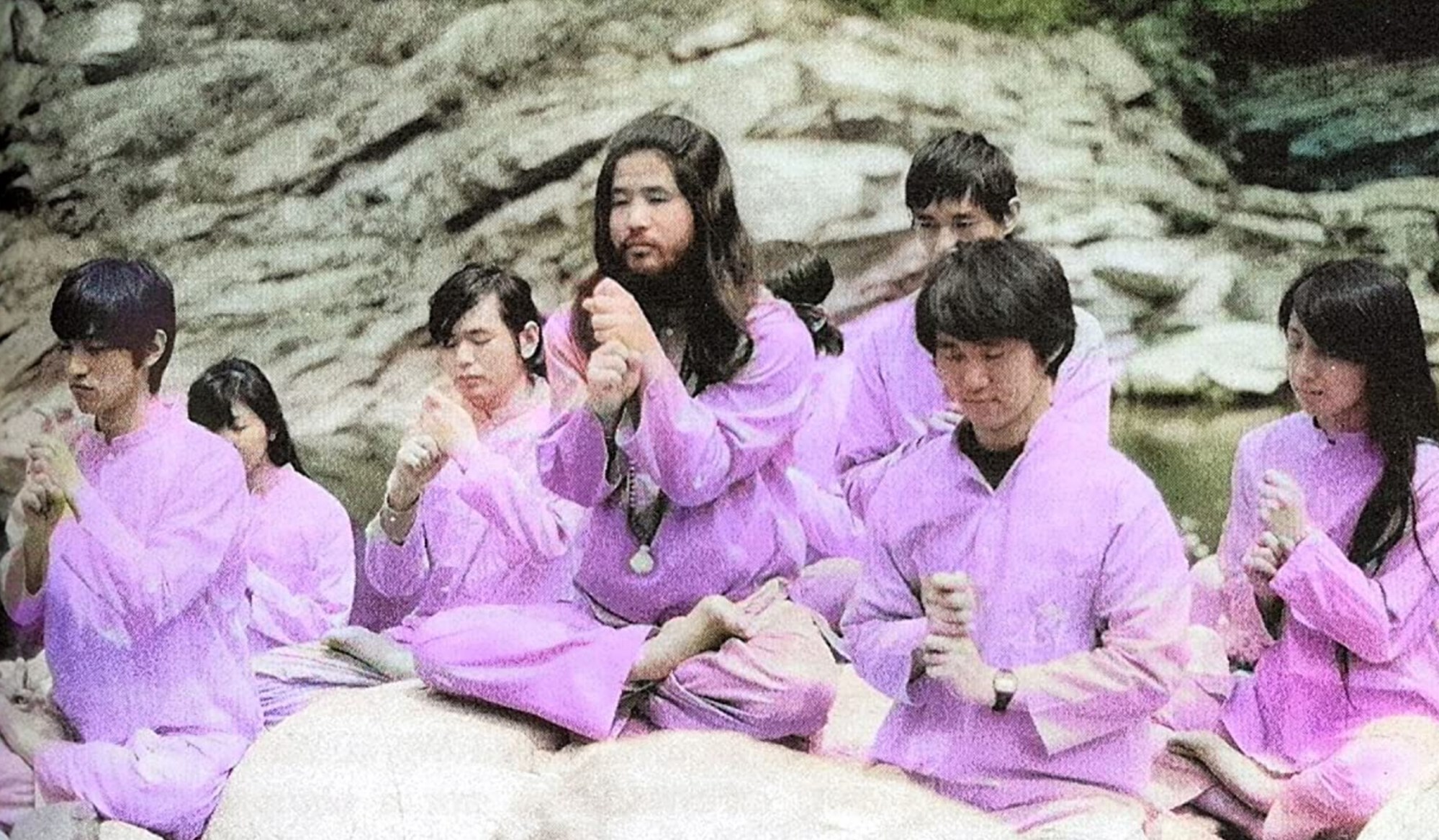
- Festivals
Sundance 2023: Documentary “AUM: The Cult at the End of the World” Highlights Insidious Nature of Extremism
How does a yoga school morph into a political movement, and eventually a doomsday cult responsible for a terrorist nerve gas attack? That’s the darkly fascinating transformation put under the microscope by AUM: The Cult at the End of the World, a world premiere and U.S. Documentary Competition title at the 2023 Sundance Film Festival.
Co-directed by Ben Braun and Chiaki Yanagimoto, the absorbing nonfiction effort tells the story of Aum Shinrikyo, a Japanese group founded in 1987 by Shoko Asahara. A former acupuncturist convicted of operating an unlicensed pharmacy and selling quack health cures and other unregulated drugs, Asahara soon pivoted to yogic mysticism. Opening first one location and then a series of schools, he succeeded in tapping into a swelling cultural and political stagnation at a time when many young people felt adrift, disconnected.
Almost as a branding exercise, Asahara began to expand his empire. There were comics and cartoons, many aimed at university students. Promising health benefits, Asahara peddled a syncretic religious gumbo with teachings that he said would eventually enable followers to unlock supernatural powers, including levitation and the ability to read other people’s minds.
In 1989 he applied for, and received, recognition for Aum Shinrikyo as a religious organization. The following year, the group put forth several candidates, including Asahara himself, for election in Japan’s House of Representatives (and then cried that it was “rigged” when they lost).
Through it all, while maintaining a colorful and somewhat quirky exterior, the group differentiated itself from other historically similar cults by aggressively pursuing scientifically educated members. It established and funded programs to build out its infrastructure in that regard.
As public criticism of the group increased, the lengths to which Aum Shinrikyo would go to further its aims became horrifically evident. On March 20, 1995, they attacked the Tokyo subway system with sarin nerve gas. Thirteen people died. Thousands more were left severely ill. This was the culmination of a campaign of terror, which included the murder of a lawyer (and his family) who was spearheading a potential class action suit against the group, plus a June 1994 sarin attack in Matsumoto that killed eight people.
AUM doesn’t necessarily long dwell on it, or go out of its way to draw parallels to the present day, but attentive viewers will spot similarities between certain current faith-oriented organizations and how Aum Shinrikyo carved out and operated with impunity in the public sphere by exploiting bureaucratic fears over being seen as cracking down on “religious freedom.”
Winding back in time and telling some of its founder’s personal story, the film shows Asahara’s longstanding interest in founding a religion as a business model. It also connects his distrust and hatred of government and corporations to partial blindness stemming from Minamata disease, the result of in-utero exposure to industrial wastewater.
If there’s a bit of a blind spot, it’s perhaps that the movie doesn’t truly dig down into Asahara’s personal life (he fathered a dozen children), and what this means for an organization that hasn’t been fully eradicated. Instead, the documentary treats as a big trump card Asahara’s longtime second-in-command, Fumihiro Joyu, who participates in the movie as an interviewee. It feels, however, like there is more left to explore on this topic.
While also including the perspective of several family members of former cult members, Braun and Yanagimoto mostly build out AUM with a healthily sourced and well-edited amount of archival material. They also lean heavily upon journalists to establish a contextual framework for the story. These interviewees include Shoko Egawa, who in 1995 received the prestigious Kikuchi Kan Prize for her Aum Shinrikyo coverage, plus Andrew Marshall, a Pulitzer Prize-winning, British-born writer who covered the cult contemporaneously and would go on to co-author the book which gives the film its name.
Many factors, including a breakdown in trust of news sources and other shared institutions, lead to a fractious society in which lost souls are ripe targets for manipulation. AUM: The Cult at the End of the World serves as a powerful reminder that extremist groups and philosophies all thrive to some degree on stoked or manufactured tension with mainstream culture, and the eventual embrace that war must be made with those opposing beliefs.

